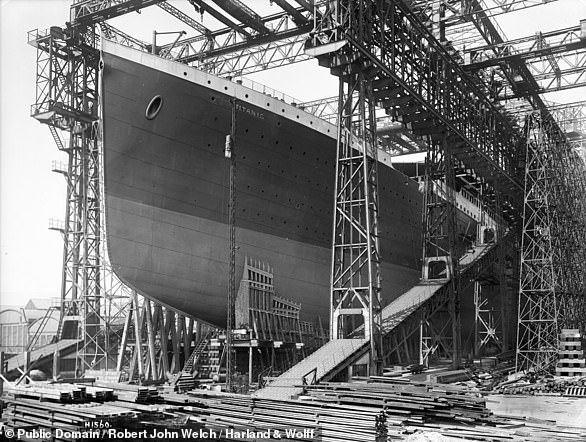The book that predicted the Titanic disaster: a creepy 1898 novel about the ‘unsinkable’ ocean liner ‘Titan’ hitting an iceberg and sinking, published 14 years before the tragedy claimed 1,500 lives
She was “unsinkable” and “indestructible,” the “greatest vessel afloat and the greatest work of man.”
And then, in 1912, the ship struck an iceberg and sank in the North Atlantic Ocean, causing a terrible loss of life.
You’d be forgiven for thinking this ship was the Titanic, whose tragic story has captivated the world since disaster struck 112 years ago this week.
But you would be wrong. For this was the Titan, the ship prophetically imagined by American author Morgan Robertson in his little-known 1898 novel.
In “The Wreck of the Titan Or, Futility,” Robertson eerily predicted one of history’s most compelling maritime disasters.
The Titanic sank in April 1912, killing more than 1,500 people. Above: The ship leaving Southampton on its maiden voyage
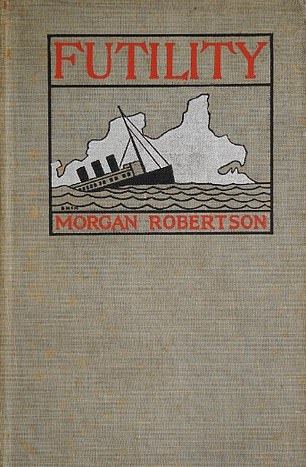
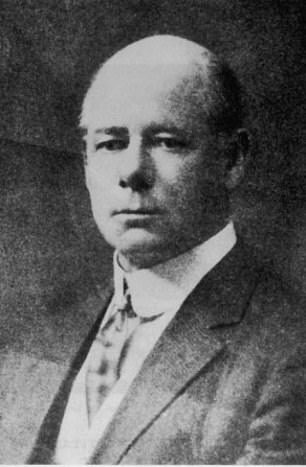
American author Morgan Robertson’s 1898 novel ‘The Wreck of the Titan Or, Futility’ eerily predicted the sinking of the Titanic
His novel began: “She was the greatest floating vessel and the greatest work of man.
“Its construction and maintenance involved all the sciences, trades and professions known to civilization.
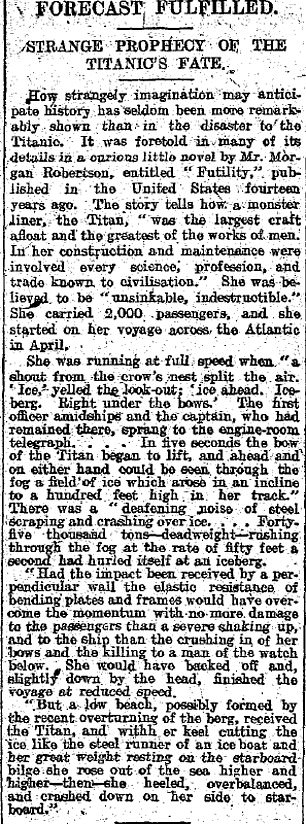
The Daily Mail’s reporting on the book shortly after the Titanic disaster
‘On her bridge were officers who, besides being the best in the Royal Navy, had passed rigorous examinations in all studies… they were not only sailors, but scientists too.’
He continued: ‘Unsinkable, indestructible, she carried as few boats as complied with the laws.
‘These, twenty-four in number, were safely covered and lashed to their blocks on the upper deck, and when launched could hold five hundred people.
“She didn’t carry any useless, cumbersome life rafts; but – because the law required it – each of the three thousand berths in the passenger, officer and crew quarters contained a cork jacket, while about twenty round lifebuoys lay along the rails.’
Robertson, an American, was a former sailor who published dozens of novels and also claimed to have invented the periscope.
Like the Titanic, the Titan struck an iceberg in the North Atlantic Ocean, off the Newfoundland Banks, about 1,000 miles off the coast of New York.
Both the fictional disaster and the real tragedy took place in a relatively calm sea, at night, in April.
The similarities don’t end there. The dream ship and the real ship were both going too fast, and both were stuck on the starboard side.
Robertson’s imaginary ship was owned by a steamship company whose major shareholder was a wealthy American.
The Titanic was part of the White Star Line, whose main shareholder was the wealthy American J.Pierpont Morgan.
Both were passenger ships that were declared the largest and most luxurious ships and were also ‘unsinkable’.
When the Titanic sank, more than 1,500 people died. There was a similarly terrible loss of life when Robertson’s Titan went down, although he gave no figures.
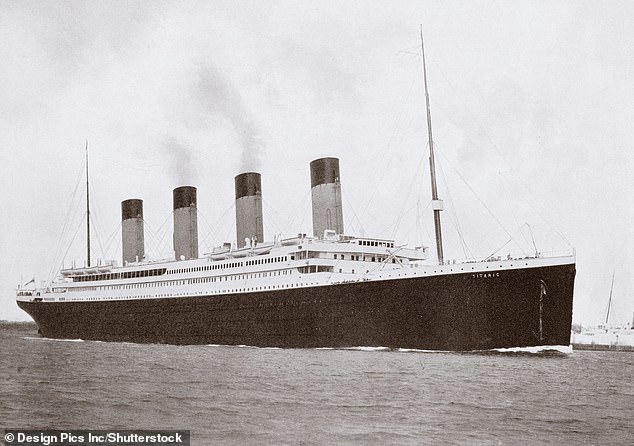
The Titanic left Southampton and was bound for New York. Its sinking has become the subject of global fascination
Robertson gave the Titan 19 watertight compartments and bulkhead doors that closed in the presence of water.
The Titanic had 16 watertight compartments and bulkhead doors designed to do the same.
The Titan was described as having three propellers. The Titanic was the first ship to have this innovation.
Furthermore, Robertson wrote that the Titan had 40,000 horsepower and a top speed of 25 knots.
The Titanic had 50,000 horsepower and the same maximum speed.
The Titanic had 3,360 people on board, while the Titan had 3,000 on board.
The White Star liner was 800 feet long, compared to 800 feet for Robertson’s creation.
The Titanic had 20 lifeboats with a capacity of 1,176 people, while the Titan had 24 boats, enough to rescue 500 passengers.
In his account of the disaster, Robertson wrote: “Ice,” shouted the lookout; “Ice cream for us. Iceberg. Right under the bow.’
‘The first officer ran amidships and the captain, who had remained there, sprang to the engine-room telegraph, and this time the handle was turned.
‘But within five seconds the bow of the Titan began to rise, and before it, and on either side, could be seen through the mist a field of ice, rising on a slope up to a hundred feet high in its orbit.
‘The music in the theater ceased, and between the babel of shouts and screams, and the deafening sound of steel, scraping and crashing over ice… with her keel cutting through the ice like the steel runner of an ice boat, and her With a great weight on the starboard bilge she rested out of the sea, higher and higher – until the propellers in the stern were half visible – and when she encountered an easy, spiraling rise of the ice under her port bow, she listed, off balance, and crashed on her side, starboard.’
Robertson wrote Futility – his first novel – as a warning to humanity amid his anger that shipping companies were paying more attention to profits than passenger safety.
He claimed to believe that while writing his novel he was controlled by a spirit and had heard ‘whispered commands’ from a ‘master’ in the ‘great silence beyond’.
The author was born in 1861 in Oswego, New York. The son of a Great Lakes skipper, he took to sea at age 16 after the sudden death of his mother and sister.
At the age of 25, he started working as a tobacconist and handyman before deciding to write.
Because of his strange views on spirit guides, newspaper editors considered him crazy.
He spent two months in a psychopath ward at New York’s Bellevue Psychiatric Hospital, but was released after obtaining a mental health certification.
In his early fifties, Roberton worked regularly for the New York Saturday Evening Post.
He sold the serial rights to two novels and two short stories were later made into silent films: The Closing Of The Circuit in 1914 and Masters Of Men in 1923.
The money he received from large advances went to nice clothes and visits to bars.
In 1909 he wrote about a war between the US and Japan, caused by a surprise Japanese attack on American naval vessels.
The story seemed to predict the bombing of Pearl Harbor in 1941, which prompted the US to enter World War II.
In other stories, Robertson wrote about submarines, airships and missiles involved in wars between Britain and Germany.

The Titanic before it left for New York. It was the most luxurious ship ever built
The author also turned to non-fiction and predicted the rise in favor of the submarine over battleships.
In 1915, when he was 54 and British and German submarines were involved in the First World War, Robertson began to suffer from severe rheumatism and needed a cane to walk.
In March of that year, he decided to visit Atlantic City, New Jersey, to rest, but a day later he was found dead in a hotel.
He was discovered standing with his hand on the side of an oak chest of drawers.
The author died while staring at the Atlantic Ocean through an open window.
Days earlier he had told his friend Bozeman Bulger, baseball editor of the New York Evening World, “I am a sailor transformed into a writer and inventor.
“From the deck I was put at a desk, from the desk I was pushed into the laboratory, and now I feel myself going back to the sea where I belong.”
In 1998, the then little-known work was discovered by banker Simon Hewitt, who republished it.
The novel is now available in various formats from booksellers and online.

